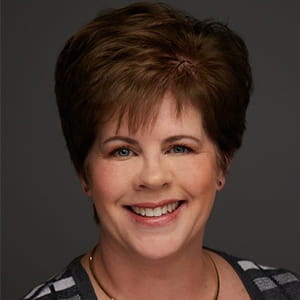Succession planning is planning for success

Succession and replacement planning are critical for your business. But do you know the difference between the two? Do you know what succession planning can do for your organization that replacement planning cannot? Planning to retain and develop your most critical employees, is planning for your organization’s long-term success.
Succession plan vs. replacement plan: What’s the difference?
A replacement plan and a succession plan are not the same thing. Replacement planning is reactive; that is, organizations only try to find a replacement once someone in a critical position announces they are leaving. Replacement planning does not focus on the development of people you already have within your organization. This can lead to missed opportunities. The more proactive you can be in the development of your team, the better off you are as an organization. It helps to secure your future.
Finding qualified replacements when someone leaves your organization can be challenging. A succession plan can make that process easier. Succession planning is about the growth and development of your employees. It’s a proactive and intentional way to help your team members identify career paths within your organization. Succession planning provides opportunities for the next generation of leaders and your high potential team members. Succession planning is about not only developing talent, but also retaining that talent.
Succession planning is a critical business strategy
With approximately 10,000 Baby Boomers stepping into retirement each day, the time for succession planning is now. Organizations are losing vast amounts of intellectual property, institutional knowledge, and business leadership experience as these Boomers leave. Succession planning ensures that this knowledge is passed on to the next generations in your workforce. Replacement planning does not.
Where should you be focusing your succession planning efforts?
When you consider the numbers within each generation, there are simply not enough GenXers available to fill the spots vacated by Boomers. Therefore, the “natural order” of succession is somewhat disrupted and has caused a significant focus on the millennial generation which is the largest generation currently in the workforce. Given this, the tendency may be to overlook the development of GenExers and concentrate exclusively on the millennials. That is an exclusionary approach that never serves an organization well. Rather, the intention of succession planning is to be one of inclusion to provide the broadest and deepest pool of talent within the organization.
While the focus is on the Millennial Generation, it is important to know that GenExers have a long career path ahead of them as well with ages ranging from 40 to 55 — that’s another 10 to 25 years in the workforce. But yes, organizations need to accelerate the growth and development of Millennials to assume higher levels of role and responsibility earlier in career than prior generations.
To develop the talents of Millennials, it is important to understand some key facts about them:
- They span a wide age range, from 25 to 39.
- They are typically a highly educated and technologically savvy group.
- Organizations are asking more of them than ever before.
Developing the skills and talents of this generation and clearing the path for them to grow with your business, can set you up for success for years to come.
Succession planning is not a luxury item
Many organizations still rely on replacement planning. Succession planning takes a commitment of time, energy, and resources. In times of pressure, businesses often have just enough capacity to get the job at hand done, and not much more. When your primary responsibility is getting a job done day to day, the time commitment and dedication required to cultivate the next generation of talent can often become a secondary or even a tertiary responsibility.
Lack of succession planning is often due not to a lack of desire, but a lack of time. Succession planning begins to look like a luxury item instead of a necessity.
The question many organizations ask is, “Can we afford to take the time to do this?” when the better question is, “How can we afford not to invest this time to develop our teams?”
Replacement planning fills one open position. Succession planning grows an entire organization.
Succession planning truly is the core foundation of effective human resources management if you:
- Like your organization culture and want to maintain it
- Want to be a good corporate citizen
- Want to decrease turnover and improve morale
- Want to foster loyalty and reduce turnover
Succession planning is not just for your HR team to think about. It is the responsibility of everyone in your organization. Fortunately, this approach makes succession planning more possible: When everyone takes a piece of the puzzle, it comes together more easily.
Learn more about the fundamentals of talent assessment, talent development and succession management at our National Training Conference. We’ll give you a practical checklist and the hands-on tools you need to design and implement a succession planning program that is tailored to your business.




